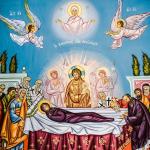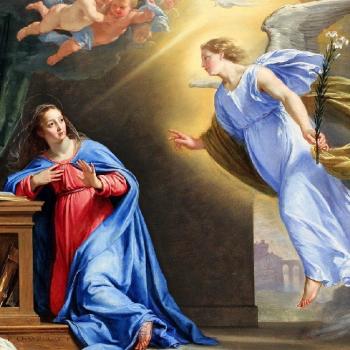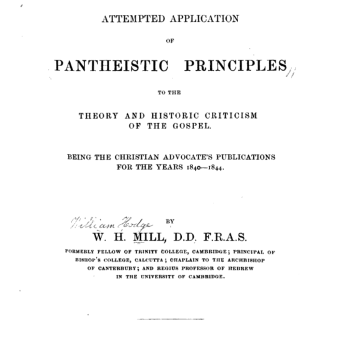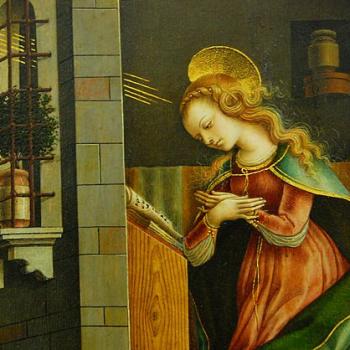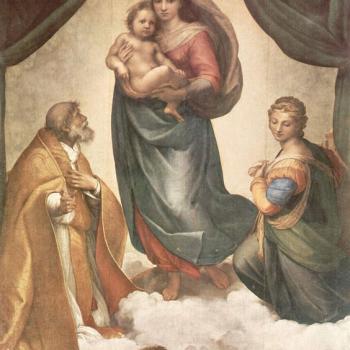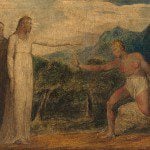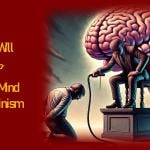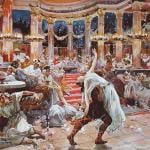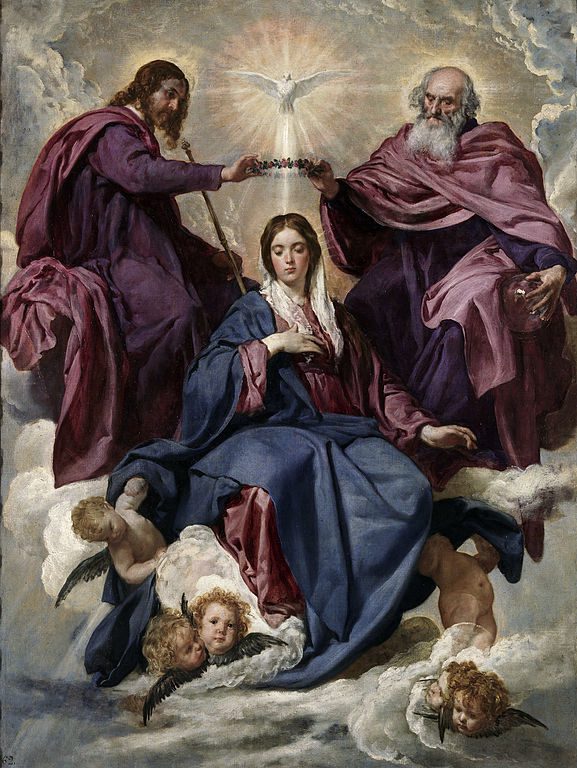
Coronation of the Virgin (c. 1636), by Diego Velázquez (1599-1660) [public domain / Wikimedia Commons]
***
(5-28-12)
***
This was on a public Facebook discussion thread. Greg Still describes himself as a “”skeptical Pentecostal” and is a former Catholic. His words will be italicized.
*****
The Bible does mention the “woman clothed with the sun” in heaven (Rev. 12:1). Her child is clearly Jesus (Rev 12:5). It doesn’t take a rocket science to figure out that this is Mary, and she is portrayed in quite a glorious state in heaven.
Certainly, if Mary had been assumed, the Bible would have mentioned something about it.
By Protestant reasoning, “certainly, if sola Scriptura were true, the Bible would have mentioned something about it”. But it never does, which is the topic of my book [about sola Scriptura]. That doesn’t stop Protestants from making an entirely non-biblical, anti-biblical concept the very foundation and bedrock and pillar of their authority structure. They do it anyway. Then, having done that, they demand that we adopt the same illogical reasoning with regard to Catholic distinctives like Mary’s Assumption.
We never claimed that absolutely everything has to be explicitly laid out in Scripture, precisely because the Bible never teaches this. That is your game, and thus your burden to defend, not ours.
Your statement above is classic. You believe this firmly, yet the Bible never states such a thing. Thus, you supposedly appeal to the Bible itself with a completely non-biblical idea that can’t be found there. Then you try to bind Catholics to this silly notion: so now you are arbitrarily applying an arbitrary tradition of men to us, as if we have to play by those rules . . . We think logically and biblically, so no dice!
Even in Catholic circles the identity of the Woman of Rev. 12 has been in dispute. From The Catholic Encyclopedia:
It is true that commentators generally understand the whole passage as applying literally to the Church, and that part of the verses is better suited to the Church than to Mary. But it must be kept in mind that Mary is both a figure of the Church, and its most prominent member. What is said of the Church, is in its own way true of Mary. Hence the passage of the Apocalypse (12:5-6) does not refer to Mary merely by way of accommodation [108], but applies to her in a truly literal sense which appears to be partly limited to her, and partly extended to the whole Church. Mary’s relation to the Church is well summed up in the expression “collum corporis mystici” applied to Our Lady by St. Bernardin of Siena.
Cardinal Newman considers two difficulties against the foregoing interpretation of the vision of the woman and child: first, it is said to be poorly supported by the Fathers; secondly, it is an anachronism to ascribe such a picture of the Madonna to the apostolic age.
I note that Cardinal Newman recognizes that the Madonna figure is an “anachronism” to the apostolic age. That is, the apostles never regarded Mary as a “Madonna”.
I do not have a copy of the Confraternity version with me at present, but I do distinctly recall reading the footnotes of it regarding Rev 12. The writer said that the application to Mary was “useful” but that the Woman represented the church.
Personally I think the Woman represents the Church at the last age, and the “manchild” represents a certain group within her who, like Christ and with Christ, will rule the world with a rod of iron.
The fact that the woman has “other children” indicates that this is not speaking of a “Virgin Mary”. (Rev 12:17)
In past treatments of the topic I have taken the view that the passage has a dual application: to Mary and the Church (and Mary as a figure of the Church). That is quite common in Scripture. I did this in my first book, which was completed 16 years ago this month, so that is nothing new with me.
However, the part specifically about giving birth to the child (who is Christ) must be about Mary, I contend, if it is about Christ, because Jesus was not a product of the Church, since He preceded it and initiated it. Therefore, that part is specifically talking about Mary. The Bible never uses a terminology of Jesus being a “child” (Rev 12:5) of the Church. He is the child of God the Father (His Divine Nature) and of Mary (as a person with both a Divine and human nature). The Church is “of Christ”; Christ is not “of the Church”; let alone its “child.” Those categories are biblically ludicrous and indeed almost blasphemous.
Your interpretation of “male child” is incoherent. “Rule all nations with a rod of iron” is clearly hearkening back to the messianic passage Psalm 2:7-9, which is again reflected in Rev 19:15 (absolutely about Jesus). It’s true that there is a secondary application along your lines in Rev 2:27, but you still have to deal with the phrase “caught up to God and to his throne” (Rev 12:5; RSV). That can’t mean “the twelve thrones” referred to in Matt 19:18 (cf. Lk 22:30; Rev 4:4; 11:16) because it says “His [i.e., God’s] throne.” Only Jesus is connected directly with that, because He is God.
And so we see Jesus (unlike any created men) sitting on God’s throne (Matt 19:28; 25:31; Heb 1:8; Rev 7:17; 22:1, 3).
Therefore, this proves that Rev 12:5 is referring to Jesus alone, and thus, His mother in this particular passage must be Mary, since it cannot be the Church, per the reasoning above. Other parts of the entire passage also have an application to the Church, as the Catholic Church continues to teach today.
You want to bring up Blessed John Henry Cardinal Newman. Bad choice, since he was my main theological influence in becoming a Catholic; I’ve had a large web page about him for 15 years, and a 448-page book of his quotations coming out in a few weeks (I mentioned it this very day on my Facebook page). In my first book, A Biblical Defense of Catholicism (p. 200), I cited his words from 1875 (“Letter to Pusey”):
What I would maintain is this, that the Holy Apostle would not have spoken of the Church under this particular image, unless there had existed a blessed Virgin Mary, who was exalted on high and the object of veneration to all the faithful. No one doubts that the ‘man-child’ spoken of is an allusion to our Lord; why then is not ‘the Woman’ an allusion to his mother?
Exactly! And precisely as I argue . . .
Revelation 12:17 is no problem since it can either be an instance of the dual meaning of “Church” or Mary as a spiritual mother in a different sense (tying into the same John at the cross receiving Mary as his “mother”). We accept the dual application. It is you who are denying the Marian application, which doesn’t fly in light of the exegesis and cross-referencing that I have shown you.
And if it is Mary in this passage (as well as the Church), then we have an indication of both her veneration and glorification in heaven, akin to the Assumption (whereas you claimed there was nothing in Scripture at all about it: as if the Assumption were solely an arbitrary tradition of men, like sola Scriptura is).
I never said “absolutely everything has to be explicitly laid out in scripture”. This is a straw man.
Is that so? You stated:
Certainly, if Mary had been assumed, the Bible would have mentioned something about it – for it would have occurred during the apostolic era. And if the Apostles wanted the saints to “venerate” her, they would have mentioned something about it?
But if there is a major doctrine of the church, then the scriptures must surely say something about it.
Yes, and I showed that it does: by analogy (Enoch, Elijah, and Paul’s experience in the second heaven), and the data of Revelation 12, just discussed. Therefore I have demonstrated “something about it.” You just disagree (on inadequate grounds). I showed implicit grounds, which is what you want, since you deny that you require explicit grounds.
Therefore, I succeeded in my task, according to your challenge. I provided what you asked for. It continues to be the case, on the other hand, that sola Scriptura is entirely absent from the Bible and massively contradicted in it at every turn. So you hang by your own false premise, whereas we are not harmed at all by it because we reject it as unscriptural in the first place.
Related reading:
Defending Mary (Revelation 12 & Her Assumption)
*****



